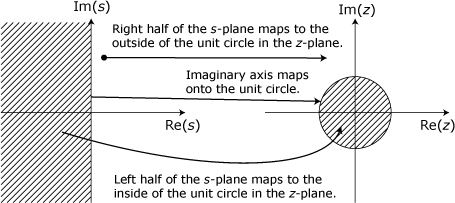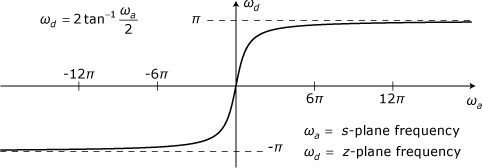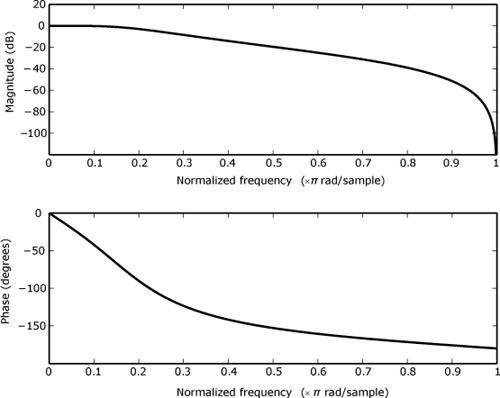Note 51. Designing IIR Filters: Bilinear Transformation
The bilinear transformation is the most commonly used approach for designing IIR filters. As discussed in Note 50, the impulse invariance technique uses a many-to-one frequency mapping that maps multiple intervals from the jω axis in the s-plane repeatedly onto the same points on the unit circle in the z-plane. This mapping can introduce aliasing of the filter response, making the impulse invariance technique unsuitable for use in designing highpass or bandstop filters. The bilinear transformation uses a nonlinear frequency mapping such that the entire jω axis of the s-plane maps one-to-one onto points of the unit circle of the z-plane. The mapping avoids aliasing, but it does “warp” critical frequencies of the analog prototype into different frequencies for the corresponding features in the digital filter’s response.
51.1. Prewarping
The s-plane to z-plane mapping that results from the bilinear transformation is depicted in Key Concept 51.2. This “warped” frequency relationship becomes increasingly compressed at higher frequencies, resulting in a need to prewarp the critical frequencies in such a way that these frequencies warp into the desired locations in the final IIR design. The usual strategy for mitigating the effect of frequency warping involves prewarping the critical frequencies using the relationship
51.1
![]()
where T is the sampling interval, ωd is the desired frequency in the final IIR design, and ωa is the prewarped frequency to be used in the design of the analog prototype.
The details of the bilinear transformation (with prewarping included) are provided in Recipe 51.1.
Example 51.1 demonstrates a manual application of this procedure. Several MATLAB-based approaches for the bilinear transformation are demonstrated in Example 51.2.








